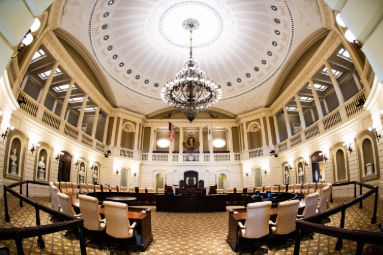Where is our winter?

As opposed to last year’s winter spell, winter has been drastically warmer. Monday’s snow flurries question when winter will arrive.
January 5, 2016
As the seasons change, it would be assumed that so would the weather. Previously, temperatures were stagnant around 70-80 degrees, but now that the new year has begun, so has a new change in weather. What does this mean for January?
El Niño is an irregular occurring change in climate which affects the temperatures and weather of the equatorial Pacific region. Warm water and air move across the Pacific and then get carried across the nation via the jet stream, which is one of the strongest wind currents in the northern hemisphere. This stream of high-powered air is carried at high speeds across long distances, resulting in the transfer of warm air from the middle of an ocean to Raleigh’s atmosphere. Scientists and atmospheric analysts have reported that the current El Niño could possibly be ranked within the top three strongest El Niños in history.
El Niño was the leading cause for the cool mornings and warm afternoons that Raleigh and most of the East Coast experienced in December. Now, temperatures are cooling down into a more reasonable winter range, though. Junior Jordin Williams said, “I’m so confused trying to pick out outfits: t-shirts one day, sweatshirts the next. In case you couldn’t tell because of the weather, winter means snow!”
Regarding the chance of snow this winter, winter weather is not completely out of the picture for this season. Reports have shown that for the rest of winter, the South will have cooler temperatures while northern states will see warmer trends. While the jet stream will continue to pull warm air to the Eastern part of America, a strong polar vortex lurks at the North Pole. Every winter an abundance of cold air swirls around polar regions waiting for their turn to swing down into other regions. This year, the polar vortex that is found surrounding the North Pole is very strong, almost strong enough to push past the currently warm jet stream. If the polar winds are strong enough, they could infiltrate El Niño’s warm weather pattern and bring possible snow in January and February. When asked his opinion on the current weather, senior Vinnie Olko said, “It’s not cold enough for me.”
So what is the connection between El Niño and global warming? Global warming is a likely factor in the immense amounts of precipitation, but some questions still remain unanswered. Each season, rain and temperature vary naturally, but over long periods of time, they can change from unnatural factors. Scientists have theories that the changes in climate have been caused by the ocean and atmospheric changes over decades, most likely caused by global warming. When El Niño rolls through, already warm temperatures can skyrocket and bring unnatural changes in weather. Over decades, this constant change can affect climate. A characteristic of El Niño is how it originates due to the movement of heat around the oceans, which leads to an idea that El Niño could be triggered by the effect of global warming on the oceans.
Whether it is because of global warming, or just a natural occurance, El Niño’s effect on the world is bringing changing temperatures to Raleigh. With the snow flurries seen Monday, there are definitely chances of snow this season.










